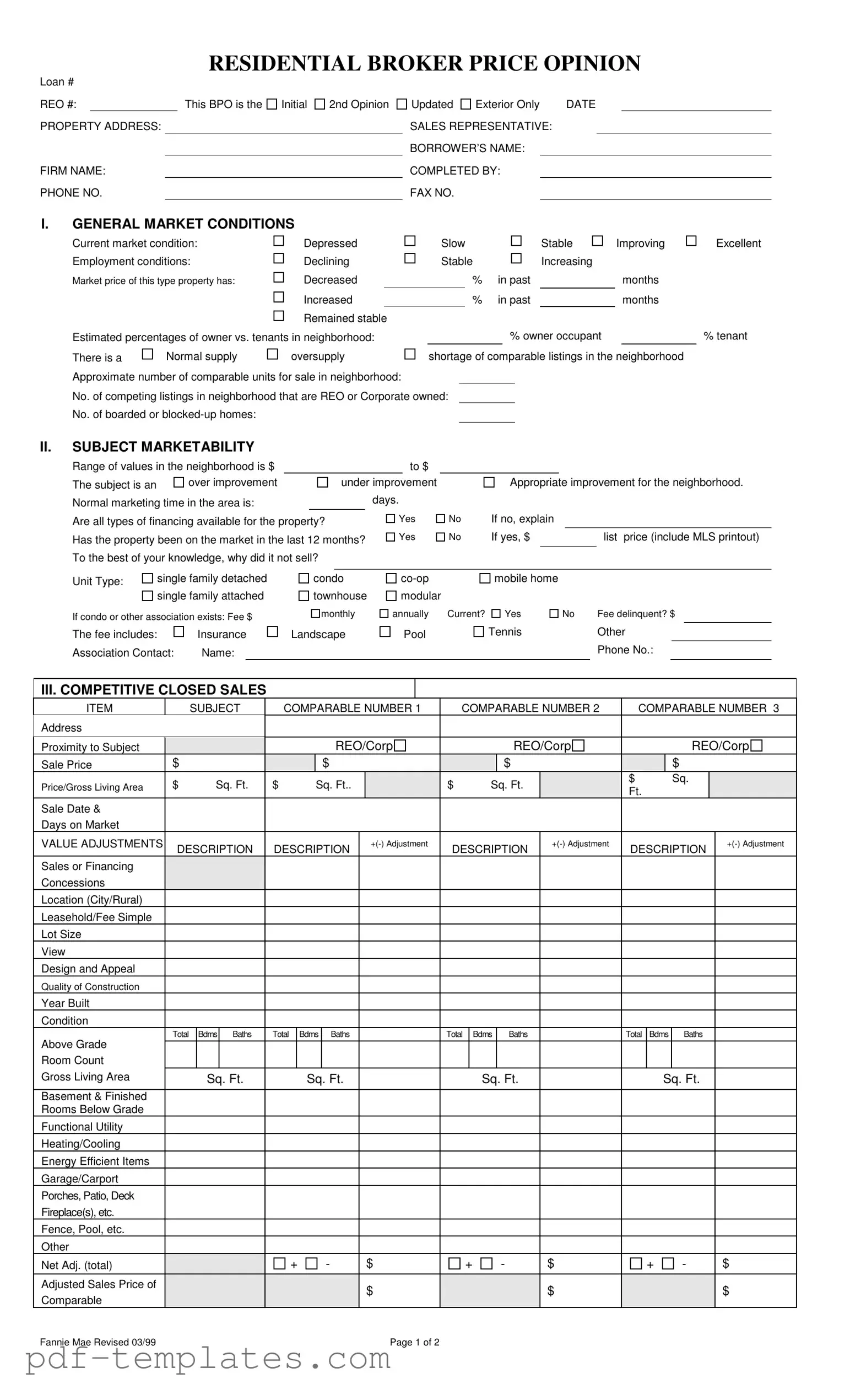The Comparative Market Analysis (CMA) is a document that real estate agents use to determine the value of a property. Like the Broker Price Opinion (BPO), it assesses the current market conditions and compares similar properties in the area. The CMA provides a detailed analysis of recently sold homes, active listings, and expired listings, which helps in establishing a fair market value. Both documents aim to guide sellers and buyers in understanding property values based on local market trends.
The Appraisal Report is another similar document. Appraisals are conducted by licensed appraisers and provide an unbiased estimate of a property's value. While BPOs are often quicker and less formal, appraisals require a more thorough inspection and analysis of the property. Both reports consider comparable sales, market conditions, and property features to arrive at a value, but appraisals are typically used for financing purposes and are more legally binding.
The Listing Agreement is also related to the BPO. This document outlines the terms under which a property will be marketed for sale. It includes details about the listing price, commission, and duration of the listing. While the BPO provides a suggested price based on market analysis, the Listing Agreement formalizes the seller's intent to sell at that price, making it a crucial step in the selling process.
For those looking to ensure their healthcare decisions are respected, the California Medical Power of Attorney form serves as an essential tool. By appointing someone they trust, individuals can guarantee that their preferences are followed even when they are unable to communicate. This legal document plays a critical role in safeguarding one's healthcare wishes, providing peace of mind in times of uncertainty, especially when considering resources like All California Forms for guidance.
The Purchase Agreement is another key document in real estate transactions. This contract outlines the terms and conditions under which a buyer agrees to purchase a property. Similar to the BPO, it reflects the property's value but is focused on the buyer's and seller's obligations. Both documents serve to facilitate the sale, with the BPO providing a basis for negotiation and the Purchase Agreement formalizing the agreement.
The Seller's Disclosure Statement is also relevant. This document requires sellers to disclose any known issues with the property that could affect its value. Like the BPO, it aims to provide transparency in the transaction process. Both documents help buyers make informed decisions, although the Seller's Disclosure focuses more on the property's condition rather than its market value.
Finally, the Rent Roll is another similar document, particularly in investment property transactions. A Rent Roll lists all rental properties owned by an investor, detailing the rent amounts, lease terms, and tenant information. While the BPO assesses market value for sale, the Rent Roll evaluates the income potential of a property. Both documents are essential for understanding the financial aspects of real estate, whether for sale or rental purposes.
